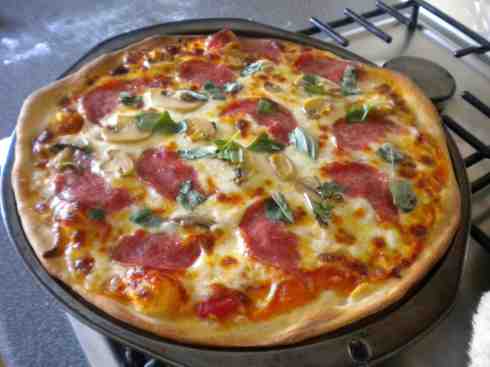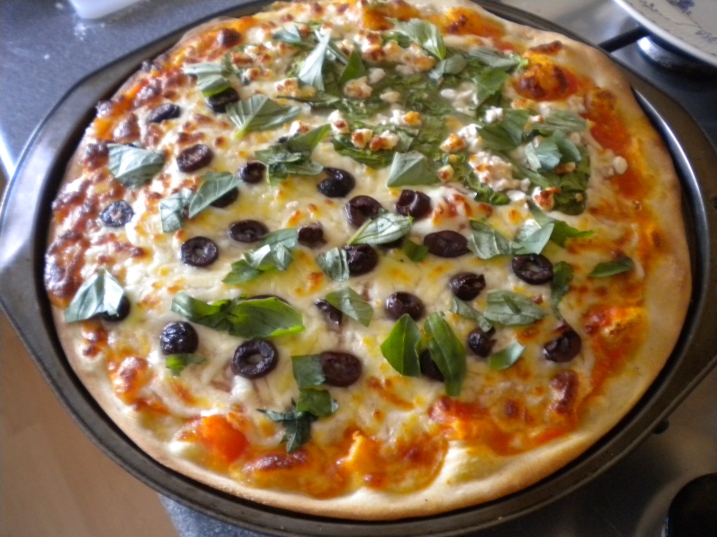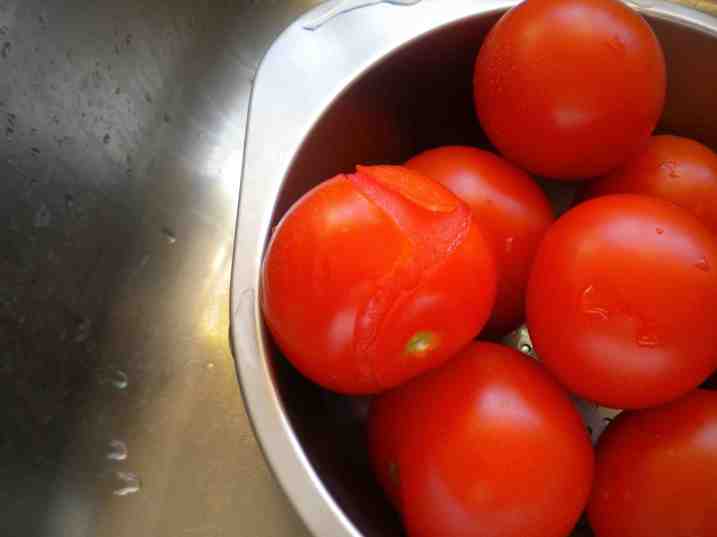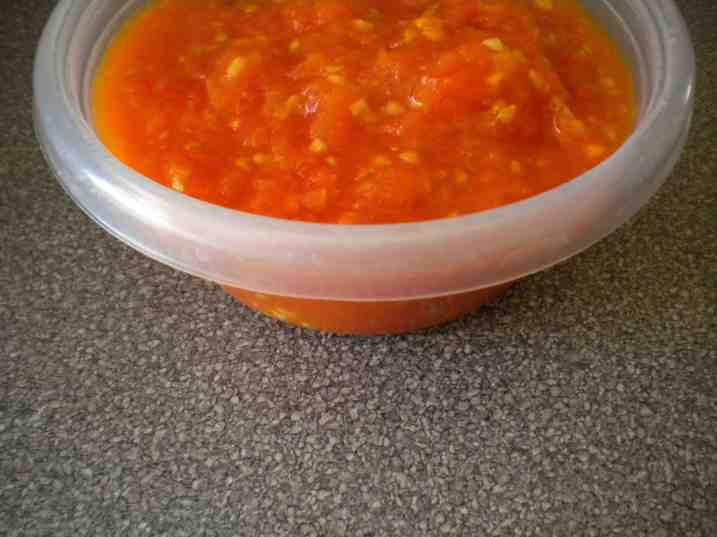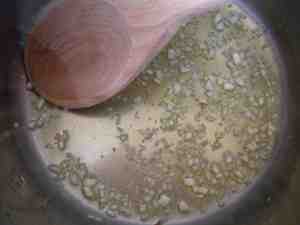Within two hours of landing I had already convinced my father to head to a smoky pivnice around the corner from our rented apartment to grab a beer. Three tall glasses of Kozel later, we finally returned home. The bar was a grungy hostel staple, with only two kinds of pilsner on tap. Despite the abundance of bawdy Commonwealth accents trumpeted back and forth, the beer was good. Light and flavorful, with just the right balance of carbonation, the Kozel provided a perfect welcome back to the city.
The next morning my family headed across the street to the bakery to pick up some rohliky for breakfast. Biting into one of these unassuming Czech rolls forcefully brings back memories of my childhood. Traditionally made, rohlíky are relatively small to American eyes, only a little longer than the distance between the heel of your palm and the tip of your middle finger. Each is rolled from a triangular piece of dough, with the point tucked securely around the middle of the roll. While most countries in Europe have a staple carbohydrate of this nature, the standout quality that I have found replicated nowhere outside of the Czech Republic is the texture of rohlíky. The rolls are possessed of a sturdy, somewhat hardened exterior, and they grow crunchy at their tips if they sit on the shelves for too long, which is why they are made fresh daily. Often sprinkled with coarse salt or seeds, the thin outer crust contrasts with the softer bread at the center of the roll, which is best pulled out in chunks and eaten with your fingers. Salted butter, jam and soft cheese all complement the bread, but our first morning we ordered one each and ate them plain while heading towards Old Town.
Later in the day I split a trdelník with my mother while wandering through the bustling Christmas market in Old Town Square. Trdelník are a delicious Central European pastry, and numerous sweet stands speckled the central plaza, catering to cold and famished market-goers. A strip of dough is wound in a tight coil around a broad pipe and quickly cooked. Once baked, the pastries are rolled in coarse vanilla sugar and almond slivers, then deftly handed across the counter with a napkin. These sweets are best eaten by peeling off one warm sugary coil at a time, normally while struggling to avoid being caught in the photographic scope of seven different Japanese tourists.
Dinner that night was a much-touted Czech specialty, eaten just across the river at a Greek-Czech hybrid restaurant. All day long I noted the presence of “roasted pig’s knee” on restaurant chalkboards across town, and decided to investigate. The slab of meat the waitress carried out was as large as my head, a Gordian knot of pork encased in thick and crispy roasted skin. The crackling skin stuck to my teeth like toffee, and the tender meat was embellished with the spicy one-two punch of piquant mustard and horseradish that were brought out in little bowls as an accompaniment. I am nothing if not a thorough eater, and I so sedulously removed every scrap of meat from the bones that all of the articulations of the pig’s forelimb were clearly revealed by the end of the meal.
For dessert we headed back east across the river to Café Slavia, an establishment notable for its ornate Old Europe charm. White-jacketed waiters bustle back and forth, elaborate cakes are arranged like antiques behind delicate display cases, and you are encouraged to check your coat at the door. As my father likes to remind me, the kavarna was a favored stomping ground of Havel and his revolutionary compatriots in the days when communism still cast its pall over the capital. After even a brief visit it’s easy to see why – the institution’s expansive picture windows overlook the Vltava River and the sweeping, impassive architectural silhouette of central Prague. Sitting at a window table as dusk falls slowly across the landscape, you can picture young revolutionaries gazing out at a majestic city burdened by darkness, plotting her redemption. Appropriately we ordered hot chocolate that was viscous and darkly sweet, with just a hint of salt, so rich that it tasted a bit like blood.
Lunch the next day was eaten on foot while rapidly navigating the holiday crowds swarming around the Andêl metro station. My father and I were headed south to Smíchov to take a tour of the Staropramen brewery, and I had insisted on eating at least one hot dog during our time in the city. I have long maintained that street hot dogs in Prague are some of the best in the world. The truly delicious ones can’t be found in restaurants or fast food chains, but are grilled and served up at the little stands that are most frequently found near major transportation hubs. My father still makes fun of my mother for the time she went up to a local vendor and asked him for three pátek. The man looked at her for a moment before grinning and saying that he wished he could have three of them too. My mother had been one consonant off – In Czech, pátek means “Friday” while párek means “hot dog”.
Unlike their muted American counterparts, Czech hot dogs are incredibly flavorful. However, a large part of their charm is in their particularly central European presentation. Instead of buns, rohliky are speared with a sharp metal stake, and once the centers of the rolls are hollowed out they are filled with a generous helping of hořčice, incomparably spicy Czech mustard. As a rule, the mustard is gradually drawn down by gravity to pool in the bottom of the rohlík, and so has a tendency to well-up, geyser-like, at inopportune moments. The hotdog was just as satisfying as I remembered, and true to form I managed to get mustard all over my clothes while trying to follow my father’s tortuous path through the throng of Christmas shoppers.
While párek v rohlíky is one of my customary on-the-go meals, one of our last nights in Prague I was able to enjoy my favorite Czech dinner. We ate with old family friends at a small local hospoda in Prague 6. My order of smažený sýr, or fried cheese, is a dish popular in several countries in the region, and for good reason. Thick wedges of mild yellow cheese are dipped in a breadcrumb batter then fried, topped with homemade tartar sauce, and served with a side of boiled potatoes drenched in butter. While the meal sounds excessive, it is the perfect palliative to combat a day spent immersed in the fierce Prague cold.
Truth be told, the cold is only drawback to visiting Prague at this time of year. Having lived in Canada I can attest to the uniquely insidious nature of winter in central Europe. Unlike the biting cold of eastern Canada, which is violently and immediately painful, central European cold slowly settles over you, chilling first your outer layers before it seeps, bit by bit, to your very core. As you walk through the muted winter light, your feet and your fingers gradually grow numb and the cold burrows deeper into your body until it envelops your very bones. Brief respite can be found by huddling in stores or metro stations, but soon as you venture outside you are once more steeped in its relentless chill. Prague’s winter cold is persistent as a drug addiction, and just as difficult to shake, which is likely one of the reasons Czech cuisine so heavily emphasizes beer, meat, potatoes, and cheese.
Even though the weather is formidable in the winter, a trip to the city at any time of year is worth it. Sitting in the airport while watching the first delicate snowflakes of our visit drift towards the tarmac, I had no regrets. Well, I had one. I hadn’t gotten a chance to order palicinky, the lightly sweetened Czech pancakes that are filled with chocolate syrup and topped with vanilla ice cream.
I suppose I will have to add those to my long list of reasons to visit Prague again…


